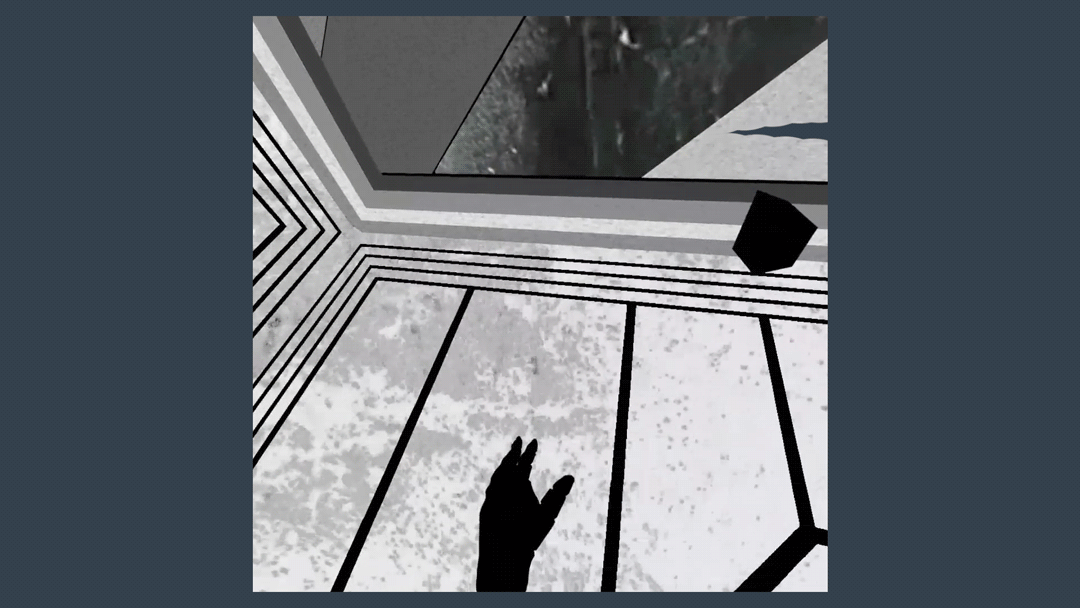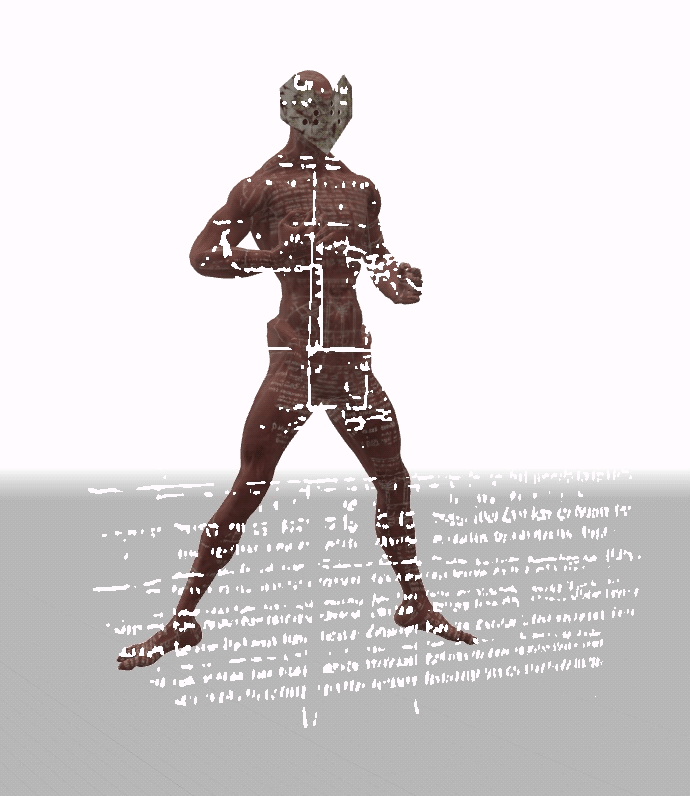The Invisible College
The Invisible College
Matthew Ritchie is a contemporary artist based in New York who works in installation, performance, painting, drawing, sculpture, and sound. Ritchie’s work addresses questions about the nature of the universe and our understanding of it, and asks what these enigmas might look like when manifested through artistic creation.
As the 2018–21 Dasha Zhukova Distinguished Visiting Artist at MIT, Matthew Ritchie has created a multi-part transmedia artwork, The Invisible College. The central theme, as is often the case in Ritchie’s work, is the emergence of hidden narratives from the specific informational qualities of the site. At MIT, The Invisible College was inspired by new developments in artificial intelligence, collaborations with a multidisciplinary team of MIT faculty and students, and Sir Francis Bacon’s 1626 unfinished utopian science-fiction story, New Atlantis, which proposed the first description of the scientific method, ultimately becoming the model for research institutions like MIT. What has emerged from that confluence of ideas is a recursive reflection on experimental inquiry, embodied in a science fiction detective story set in an evocative, almost mythological version of MIT.
The first part of The Invisible College manifested in early 2020 as a site specific performative VR game, House of Strangers, using Generative Adversarial Networks (StyleGAN and CycleGAN) and artificial intelligence (GPT-2) to generate imagery and content and featuring music by Evan Ziporyn, Kenan Sahin Distinguished Professor of Music at MIT. When the campus was closed due to the COVID-19 pandemic, the VR game migrated across media to become a second work: Latent Island, that nested footage from the GAN’s and the VR game inside 360 video footage of the now empty campus.
The third iteration of the project, Color Confinement, premieres as part of the “Unfolding Intelligence” symposium. This even deeper recursion was also made without setting foot on the closed campus, using ‘actors’ derived from a video game engine. A richly textured mood piece, Color Confinement is a melancholy study of genre play, world building, and the physics of sight. Masked avatars representing the elementary colored quark and anti-quark particles called ‘Red’, ‘Green’, and ‘Blue’, move in and out of other informational narratives within the film, accompanied by the haunting score by Evan Ziporyn and Shara Nova, a further collaboration within this recursive structure. As these mysterious figures roam the almost deserted MIT campus, their activities might be read both as a meditation on the role of the masked persona in gaming and popular culture, and as a response to the masked world that defined 2020 during the COVID-19 pandemic.
The final iteration, House of Illusion, will feature the avatars reenacting scenes from the film in a large-scale public augmented reality work; completing the cycle from site information to site specific game, then to informational film, and finally back to the original physical site.
Join Matthew Ritchie and and members of the project team in conversation:
Breakout Room: The Invisible College
Live Interactive Q&A Event with Matthew Ritchie, William Lockett, Shara Nova, Sarah Schwettmann, Sarah Wolozin, and Evan Ziporyn
Friday, April 9, 2021 / 11:00am EDT
The Invisible College: Latent Island
Archival video, 2020

The Invisible College: House of Strangers
Performative Virtual Reality work, 2020
Coming Soon

The Invisible College: House of Illusion
Augmented Reality, 2021
Related Project Documentation
The Invisible College VR Beta Tests
In the late days of January in 2020, Matthew Ritchie staged a beta version of his VR game, The Invisible College, in the U-shaped atrium of MIT’s Physics building, a former century-old courtyard. On the bright grid-like floor designed by Sol LeWitt, audiences wandered in fields of images generated by artificial intelligence, virtual worlds created from datasets that spanned the subatomic to the galactic, against an otherworldly soundscape by Professor Evan Ziporyn.
An Artist Inquires into the Computation Substrate of MIT
A Q&A with Matthew Ritchie during development of The Invisible College and his residency at MIT Center for Art, Science & Technology.
Matthew Ritchie at MIT
No stranger to the MIT campus, Ritchie created a site-specific installation at the Zesiger Center in 2002 and has made many visits since to engage with the MIT community and explore the implications of technology’s ever-expanding role in our culture and its relationship to art.
Project Credits
The Invisible College: Color Confinement
Written and Directed by Matthew Ritchie
Production
MIT Center for Art, Science & Technology (CAST)
Evan Ziporyn, Kenan Sahin Distinguished Professor of Music and Faculty Director of the MIT Center for Art, Science & Technology (CAST)
Leila W. Kinney, Executive Director of Arts Initiatives and the MIT Center for Art, Science & Technology (CAST)
Lydia Brosnahan, CAST
Matthew Ritchie Studio
Supported by the Dasha Zhukova Distinguished Visiting Artist Program
Animation
Nick Roth
Music
“I Saw a Light Beam”
“How Did It Rain”
“As It Once Was”
Composed by Evan Ziporyn, Lyrics by Matthew Ritchie
“Cold and Alone”
Composed by Evan Ziporyn, Lyrics by Peter Fisher
© 2020 Airplane Ears Music (ASCAP)
“The Black Road”
Composed by Shara Nova, Lyrics by Matthew Ritchie
© 2008 Blue Sword Publishing (ASCAP), Administered by Domino Publishing Company USA
Editing and Sound Design
Matthew Ritchie & Nick Roth
Archival sound fragments with permission from bap-tizum.com and freesound.org
360 Cinematography
Matthew Ritchie Studio
StyleGAN Implementation
Sarah Schwettmann, Department of Brain and Cognitive Sciences, MIT
Matthew Ritchie Studio
CycleGAN Implementation
Chi-Hua Jonny Yu, Department of Civil and Environmental Engineering, MIT
Advisory Group
Markus Buehler, Jerry McAfee (1940) Professor in Engineering, Civil and Environmental Engineering, MIT
Peter Fisher, Professor and Department Head, Physics, MIT
Peter Galison, Pellegrino University Professor of the History of Science and of Physics, Harvard University
Caroline Jones, Professor, History, Theory + Criticism Section, Department of Architecture, MIT
Sarah Wolozin, Director, Open Documentary Lab, MIT
© Matthew Ritchie, 2021, All Rights Reserved
